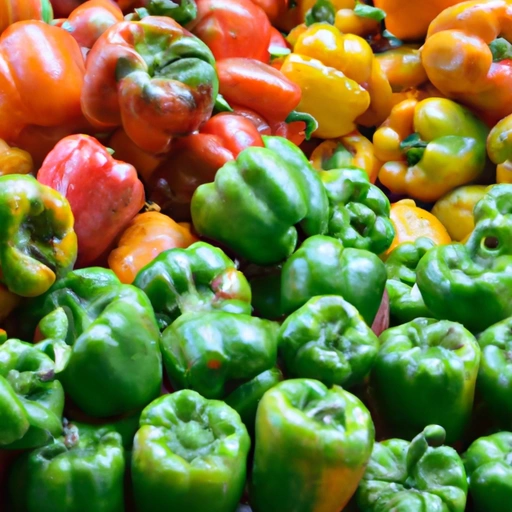Bell Pepper
Description

Bell peppers, also known as sweet peppers or capsicum, are a staple ingredient in cuisines around the globe. They are prized for their crisp texture, vibrant colors, ranging from green to red, yellow, orange, and even purple, and their mild, sweet flavor. Bell peppers are technically fruits but are commonly used as vegetables in savory dishes. They can be consumed raw, cooked, or preserved and are available fresh, frozen, or canned. In recipes, bell peppers are often measured by volume in cups (American unit) or grams and kilograms (European and Asian units), and sometimes by the number of peppers used.
Common uses
Bell peppers are used to add color, flavor, and texture to salads, stir-fries, stews, and soups. They are a popular ingredient in fajitas, pizzas, and stuffed pepper dishes. Additionally, they can be pickled, roasted, or used as a garnish. Bell peppers are also processed into paprika, a spice that adds a sweet and smoky flavor to dishes.
Nutritional value
Calories
One medium-sized bell pepper (about 148 grams or 5.3 ounces) contains approximately 25 calories.
Protein
Bell peppers provide about 1 gram of protein per medium-sized pepper.
Fat
They are naturally low in fat, with less than 0.3 grams per pepper.
Carbohydrates
Carbohydrates content is about 6 grams per pepper, with 2 grams coming from dietary fiber.
Vitamins
Bell peppers are an excellent source of Vitamin C, providing over 150% of the daily value per pepper. They also contain Vitamin A, E, and several B vitamins.
Minerals
They offer a range of minerals including potassium, magnesium, and iron in small amounts.
Health benefits
Bell peppers are rich in vitamins and antioxidants, which may contribute to overall health by reducing the risk of chronic diseases. The high vitamin C content supports immune function, skin health, and iron absorption. The carotenoids in red bell peppers, particularly beta-carotene, are beneficial for eye health. Additionally, the fiber in bell peppers helps support digestive health and may contribute to cardiovascular health by helping to lower cholesterol levels.
Potential risks
While bell peppers are generally safe for most people, they can cause allergic reactions in individuals with specific food allergies. Bell peppers belong to the nightshade family, which some people may be sensitive to, potentially leading to digestive discomfort or other symptoms.
Common recipes
Bell peppers are featured in recipes like ratatouille, gazpacho, bell pepper salads, stuffed peppers, and fajitas. They are also common in various pasta sauces, pizza toppings, and as a crucial ingredient in many Mexican, Italian, and Asian dishes.
Cooking methods
Bell peppers can be sautéed, grilled, roasted, or steamed. They are also frequently eaten raw in salads or as part of a crudité platter.
Pairing with other ingredients
They pair well with onions, garlic, tomatoes, zucchini, eggplant, and a variety of herbs and spices. Bell peppers also complement proteins such as beef, chicken, pork, and tofu.
Summary
Bell peppers are a versatile, flavorful, and colorful food ingredient that enhances the nutritional value and visual appeal of various dishes. Whether used in a simple raw salad or a complex cooked meal, bell peppers contribute a distinct sweetness and satisfying crunch that is appreciated by many. With a rich history and widespread popularity across continents, bell peppers are truly a global ingredient suitable for a myriad of culinary applications.